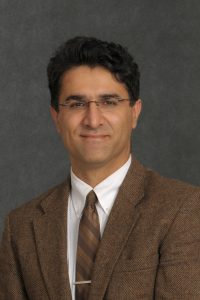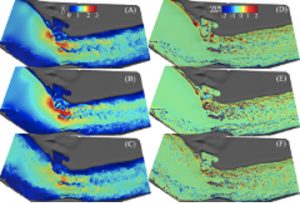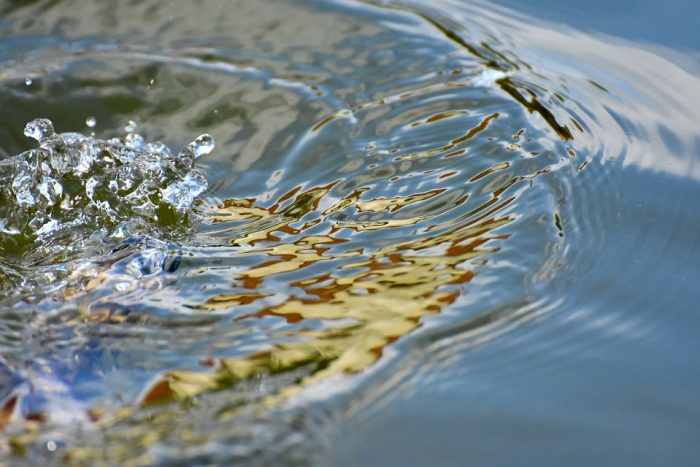SBU’s Ali Khosronejad scores $2 mln to study water turbines
By Daniel Dunaief
While wind is nice and effective, moving water is even more promising, especially in the future of alternative energies.

That’s because water is almost 1,000 times more dense than air, which means that the movement of the wet stuff due to tides or storms could produce a considerable amount of energy.
Indeed, “if we can effectively harness the energy from moving waters in our national waterways alone, it could provide enough energy to power the whole country,” said Ali Khosronejad, Assistant Professor in the Department of Civil Engineering at Stony Brook University.
Khosronejad recently received $2 million as part of a $9.7 million four-year Department of Energy grant to study and develop ways to turn the movement of water into usable energy.
“I’m very optimistic about the future of this” approach, he said.
The DOE funds, which will involve a collaboration with East Carolina University, the University of New Hampshire, and Lehigh University, is a part of the new Atlantic Marine Energy Center, for which Khosronejad is a co-director.
The funds at Stony Brook will support hiring researchers at numerous levels, from post doctoral scientists, to graduate students and undergraduates. The money will also support adding new computer modules and expanding storage at the supercomputer.
Stony Brook will also tap into these funds to enable travel for these new hires, to help them interact in person with their collaborators from other universities.
The combined effort at these academic centers will be dedicated to researching ocean energy technology, education and outreach.
Researchers will work in the field, the laboratory and with computers on these ocean energy projects. They will seek to use wave energy and tidal energy conversion through such efforts as wave energy converters and tidal turbine farms.

The wave-energy converter floats on the seawater surface and uses the energy from the up and down motion of the water surface to produce electrical energy.
Researchers around the world are working to improve the efficiency of tidal turbine farms. Khosronejad described the effort as being in its infancy.
A good portion of the current project involves finding ways to optimize the positioning and layout of turbines in tidal farms. In his team, Khosronejad will work on the development of new artificial intelligence approaches to optimize the positioning and layout of turbines in tidal farms.
Stony Brook’s role in this project will involve working with computers.
In his research group, Khosronejad will work with supercomputers. His effort involves working to develop high-fidelity mathematical models that can address sediment transport and sediment-laden flows in tidal farms.
Scientists at the University of New Hampshire and ECU are involved in addressing environmental concerns.
In the Department of Electrical Engineering at Stony Brook, co-principal investigators Fang Luo, Associate Professor and Peng Zhang, Professor in the Department of Electrical Engineering will work with computers and laboratories for micro-grid software and hardware research, respectively.

Working with Lehigh University, Khosronejad is doing high fidelity simulations, to replicate what researchers in the field at the University of New Hampshire and the Coastal Studies Institute at ECU are studying.
“We validate and develop artificial intelligence for design optimization of these tidal farms,” Khosronejad explained. The goal is to optimize the design of hydrokinetic turbines in estuaries and coastal areas that can create tidal farms.
The collaboration will coordinate with the National Renewable Energy Laboratory, Sandia National Laboratories, Pacific Northwest National Laboratory, European Marine Energy Centre and Old Dominion University.
The first year of the project involves hiring, training graduates and undergraduates, setting up the foundation, and beginning the infrastructure upgrade.
“The training part is important,” Khosronejad said. “This will be the next workforce. The infrastructure will stay there for the next 10 years” so the university can use it in a host of other projects.
Khosronejad is encouraged by the financial commitment from the Department of Energy. “They understand how important it is, which is why they are investing a lot in this,” he said. Some of these tidal farms are already working in the East River, between Manhattan and Roosevelt Island.
Wind turbines
At the same time, Khosronejad is continuing a wind turbine project he started with Fotis Sotiropoulos, the former dean of the College of Engineering and Applied Sciences at Stony Brook who is now Provost at Virginia Commonwealth University.
Khosronejad is now the principal investigator on that $1.1 million project and is continuing to work with Sotiropoulos, who officially left the project but is still volunteering to participate in its research activities. The scientists are working on how to use artificial intelligence to enhance the design of wind turbines.
Computer programs can alter the angle of the blades for the offshore wind farms where they attempt to use a control system to pitch the blades automatically to reduce the wind load during highly turbulent wind flows.
Changing the angle of attack of the blade can lower the loads and save money that would otherwise go to repairing blades that cracked or developed weaknesses amid strong winds, Khosronejad said.
The researchers presented their results at the American Physical Society meeting in Phoenix just before Thanksgiving.
The researchers are trying to balance between using the turbine to generate energy and preventing the force of the winds from damaging the system.
When wind speeds are up to 25 miles per hour, the system uses the full power of the wind to maximize energy production. At speeds above that, the turbulent wind can damage the rotor and gearbox. The blades are pitched to reduce the angular velocity, which is known as self-preservation mode. At speeds over 55 miles per hour, the turbine stops working to produce no energy and avoid significant damage to the rotors and gearbox.
Generally, such federal research projects involve sharing results publicly and with the industry sector. The goal is to share science that enables the production of reliable energy.







